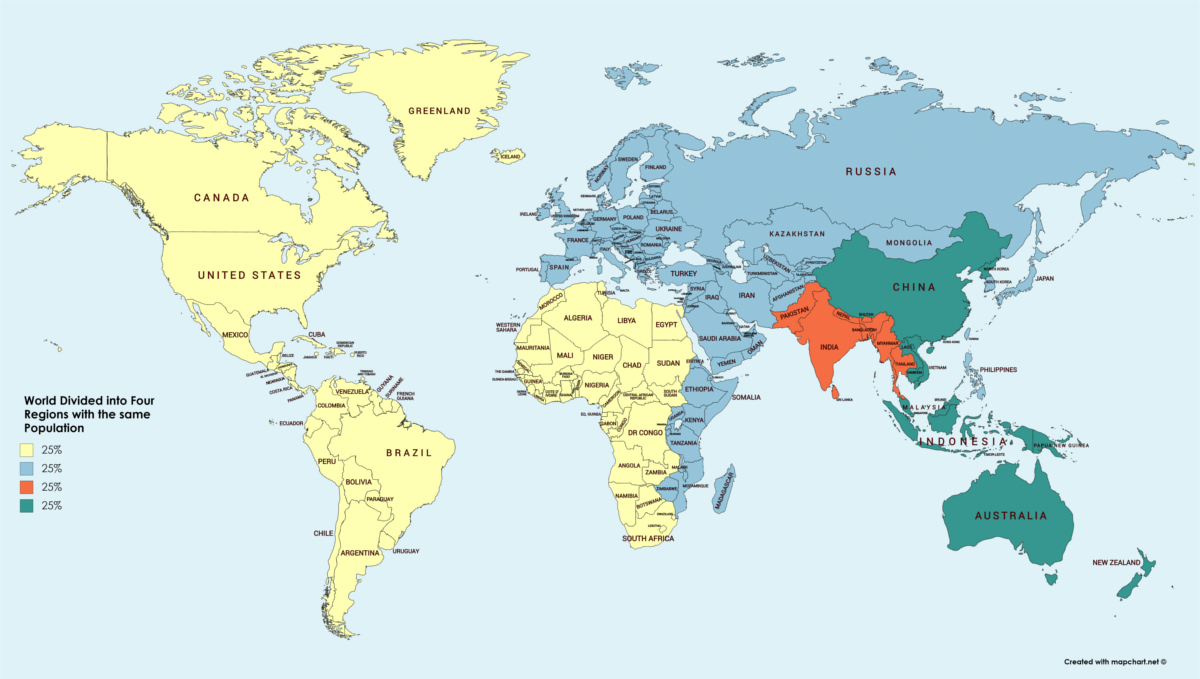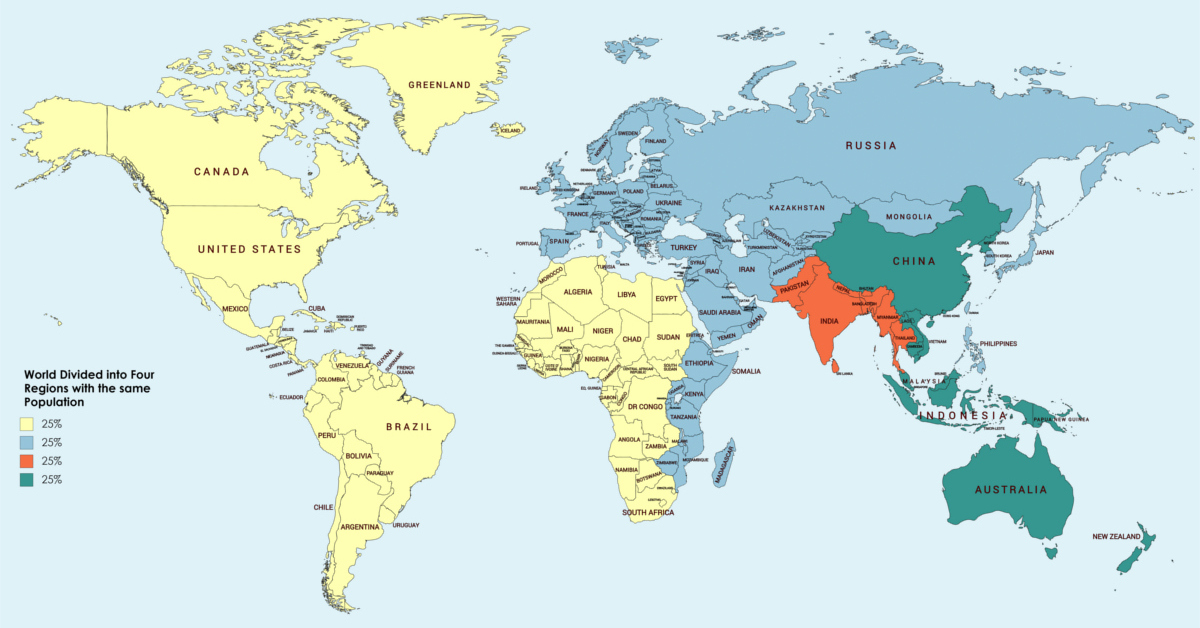Demographics
Mapped: The World Divided Into 4 Regions With Equal Populations
View a high resolution version of this graphic
World Map: Divided Into 4 Regions With Equal Populations
View the full-size version of the infographic by clicking here
At the most basic level, a standard world map tells us almost nothing about human population.
While the borders on a map may give us an idea of political boundaries or even aspects of continental geography, in reality they have little to do with showing population density.
That said, it is possible to apply one simple alteration to the world map so that we can make it more interesting from a population perspective – and it turns out that doing so can help us gain insight on where regional population density is the greatest.
Splitting Up the Map
Today’s map comes from Reddit user /u/OrneryThroat and it breaks up the world by grouping countries into four equally populated regions.
While both simple and crude, this mechanism does have some profound results:
| Region | Population |
|---|---|
| North America, South America, and West/Central Africa | 1.9 billion |
| Europe, East Africa, Middle East, and Northern Asia | 1.9 billion |
| South Asia | 1.9 billion |
| Most of Southeast Asia, China, and Oceania | 1.9 billion |
More specifically, there is one area that stands out from a visual standpoint, and it resides clearly in the southern portion of Asia.
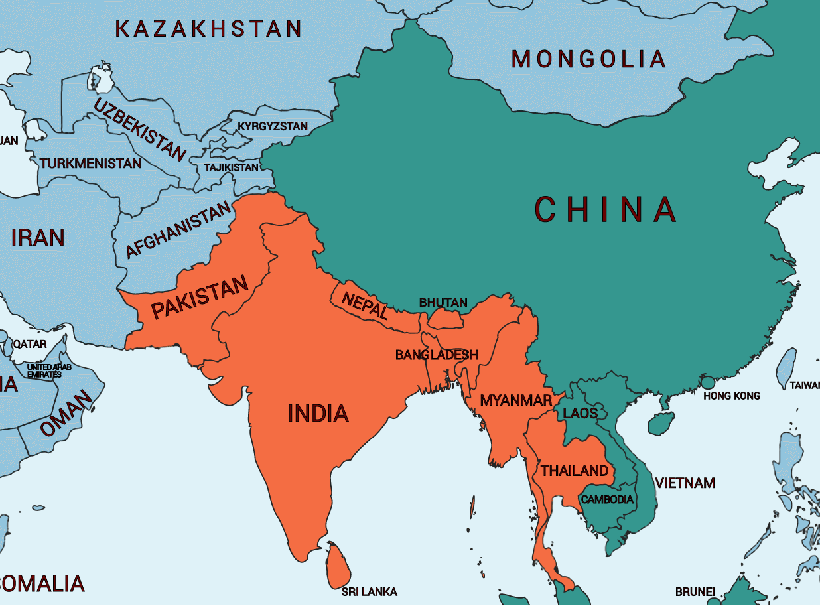
Home to 1.34 billion people, it’s well-known that India already holds roughly 20% of the global population – but add Pakistan (195 million) and Bangladesh (165 million) into the mix, and you’re already closing in on one quarter of the global total.
Meanwhile, to get to a similar number, you’d need to add the entire populations of North America, South America, Europe, and Oceania together to even come close.
Shown Another Way
While splitting it into four equal portions is one way to transform the world map, here is another geometric route to conveying a similar idea about the world’s population density:
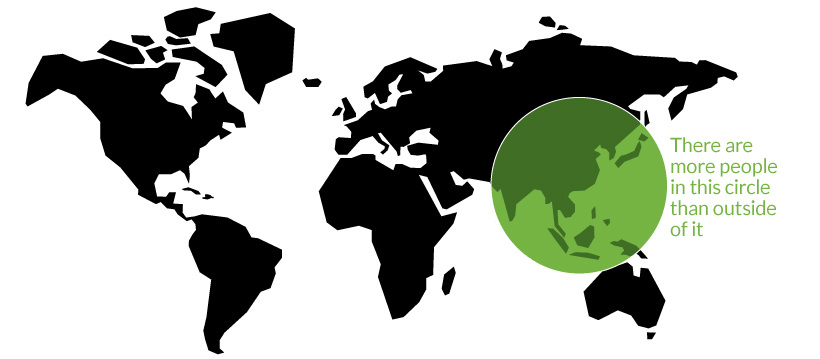
On a previous Chart of the Week, we showed that 22 of the world’s 37 megacities are located in the small circle above, putting into perspective the region’s population density in a similar but different way.
These simple transformations of the world map are not only memorable, but they also give our brain an easy heuristic to better understand the planet we live on.
Demographics
The Smallest Gender Wage Gaps in OECD Countries
Which OECD countries have the smallest gender wage gaps? We look at the 10 countries with gaps lower than the average.
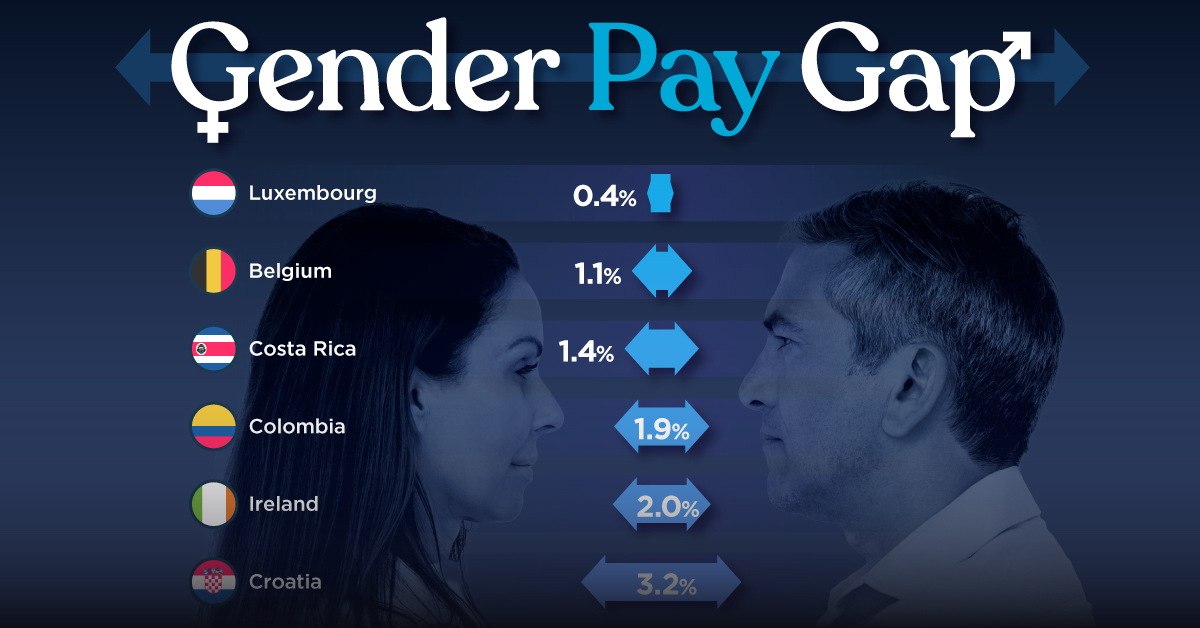
The Smallest Gender Pay Gaps in OECD Countries
This was originally posted on our Voronoi app. Download the app for free on iOS or Android and discover incredible data-driven charts from a variety of trusted sources.
Among the 38 member countries in the Organization for Economic Cooperation and Development (OECD), several have made significant strides in addressing income inequality between men and women.
In this graphic we’ve ranked the OECD countries with the 10 smallest gender pay gaps, using the latest data from the OECD for 2022.
The gender pay gap is calculated as the difference between median full-time earnings for men and women divided by the median full-time earnings of men.
Which Countries Have the Smallest Gender Pay Gaps?
Luxembourg’s gender pay gap is the lowest among OECD members at only 0.4%—well below the OECD average of 11.6%.
| Rank | Country | Percentage Difference in Men's & Women's Full-time Earnings |
|---|---|---|
| 1 | 🇱🇺 Luxembourg | 0.4% |
| 2 | 🇧🇪 Belgium | 1.1% |
| 3 | 🇨🇷 Costa Rica | 1.4% |
| 4 | 🇨🇴 Colombia | 1.9% |
| 5 | 🇮🇪 Ireland | 2.0% |
| 6 | 🇭🇷 Croatia | 3.2% |
| 7 | 🇮🇹 Italy | 3.3% |
| 8 | 🇳🇴 Norway | 4.5% |
| 9 | 🇩🇰 Denmark | 5.8% |
| 10 | 🇵🇹 Portugal | 6.1% |
| OECD Average | 11.6% |
Notably, eight of the top 10 countries with the smallest gender pay gaps are located in Europe, as labor equality laws designed to target gender differences have begun to pay off.
The two other countries that made the list were Costa Rica (1.4%) and Colombia (1.9%), which came in third and fourth place, respectively.
How Did Luxembourg (Nearly) Eliminate its Gender Wage Gap?
Luxembourg’s virtually-non-existent gender wage gap in 2020 can be traced back to its diligent efforts to prioritize equal pay. Since 2016, firms that have not complied with the Labor Code’s equal pay laws have been subjected to penalizing fines ranging from €251 to €25,000.
Higher female education rates also contribute to the diminishing pay gap, with Luxembourg tied for first in the educational attainment rankings of the World Economic Forum’s Global Gender Gap Index Report for 2023.
See More Graphics about Demographics and Money
While these 10 countries are well below the OECD’s average gender pay gap of 11.6%, many OECD member countries including the U.S. are significantly above the average. To see the full list of the top 10 OECD countries with the largest gender pay gaps, check out this visualization.
-

 Real Estate2 weeks ago
Real Estate2 weeks agoVisualizing America’s Shortage of Affordable Homes
-

 Technology1 week ago
Technology1 week agoRanked: Semiconductor Companies by Industry Revenue Share
-

 Money1 week ago
Money1 week agoWhich States Have the Highest Minimum Wage in America?
-

 Real Estate1 week ago
Real Estate1 week agoRanked: The Most Valuable Housing Markets in America
-

 Business1 week ago
Business1 week agoCharted: Big Four Market Share by S&P 500 Audits
-

 AI1 week ago
AI1 week agoThe Stock Performance of U.S. Chipmakers So Far in 2024
-

 Misc2 weeks ago
Misc2 weeks agoAlmost Every EV Stock is Down After Q1 2024
-

 Money2 weeks ago
Money2 weeks agoWhere Does One U.S. Tax Dollar Go?

